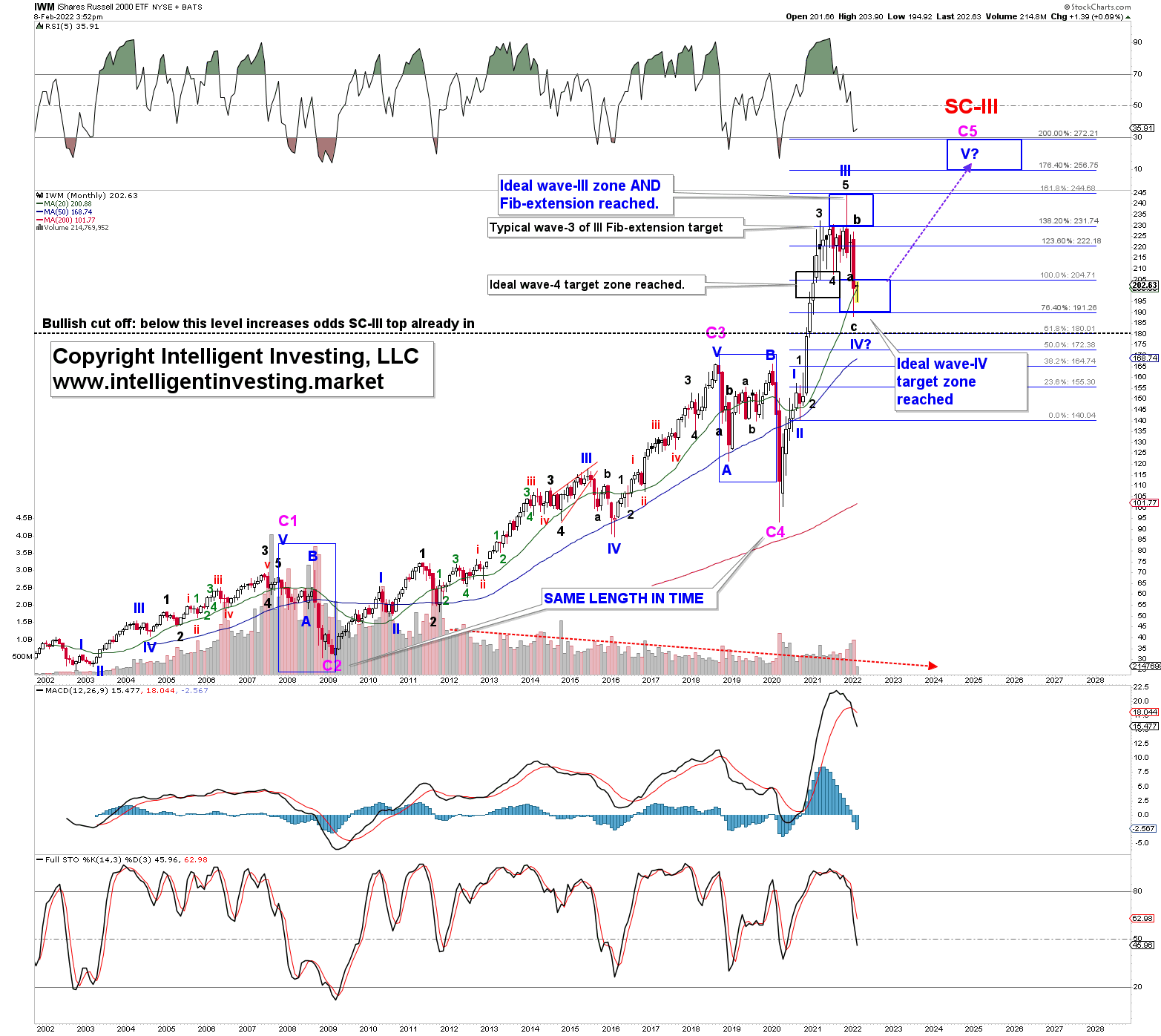The Elliott Wave Principle (EWP) tracks the progress of financial markets via what Elliott called "waves." The underlying principle is that markets are governed by human emotion, generating waves of fear, greed, hope, despair and other feelings. Each wave reflects social/investor sentiment changes, and the form is repetitive and, thus, predictive. Waves are market moves in a time frame, from seconds to years to decades. These market moves are mostly made up of a five-wave movement in price, followed by a three-wave step in either direction, up or down. They are the most efficient way for financial markets to progress in time. (Source: here.)
Applying this time-tested, accurate and reliable tool to the iShares Russell 2000 ETF (NYSE:IWM) tells us when zooming out the following.
Figure 1: IWM monthly candlestick charts with detailed EWP count and technical indicators.

- The 2008-2009 bear market lasted the same length of time as the 2019-2020 bear market and, therefore, most likely saw the same wave degree. In other terms, since the markets are fractal, i.e., repetitive, a minor wave is unlikely to take a longer time than a higher degree wave.
- The rally from the 2009 low into the 2018 high was five (blue, primary) waves
- The decline into the 2020 low was three larger (blue, primary) waves, called an irregular flat.
- The 2020 low price had erased almost all the "Trump rally" since the 2016 low. It is typical for a fourth wave of one higher degree to erase most of the prior fifth wave of the lower degree. In this case, purple Cycle 4 and blue Primary V of Cycle 3.
- The rally since the 2020 low counts best as only three large (blue, primary) waves up, where (black, major) waves 3 and 4 of III, wave-III, and the tentative wave-IV at the recent January low all topped and bottomed at the exact right Fibonacci-extensions and retraces, respectively.
Hence, the most likely conclusion is that, as shown, the 2009 and 2020 lows were the same wave degree in this case labelled as Cycle 2 and 4, respectively. Besides, the rally since March 2020 is then Cycle 5 and, based on item number (5), is progressing as a Fibonacci-based impulse wave. Thus, it is still lagging the fifth wave because fifth waves ideally top at the 176.40-200.00% Fibonacci-extension of the first wave, measured from the second wave low. And that has not happened yet.
Thus, as long as the IWM stays above the 61.80% extension (bullish cut off at $180), it should rally to ideally $256-$272 to complete five more significant impulse waves up from since the March 2020 low. The beauty of the EWP is that we know with certainty after wave three comes wave four and then wave five. But if the price breaks below or above a specific cut/off level, the market has told us the interpretation of the price action was incorrect, and one must change POV. Or, as I said in my previous article, "When the facts change, I change my mind. What do you do, sir?" (Source: here). And as such, "all we can do is anticipate, monitor and adjust if necessary." Regardless, with this set of parameters, any trader has the most straightforward, most binary, possible trading plan ever: target $252-$276, stop loss $180. That give is a 10% vs. 35% risk/reward. It does not get any easier than this.
